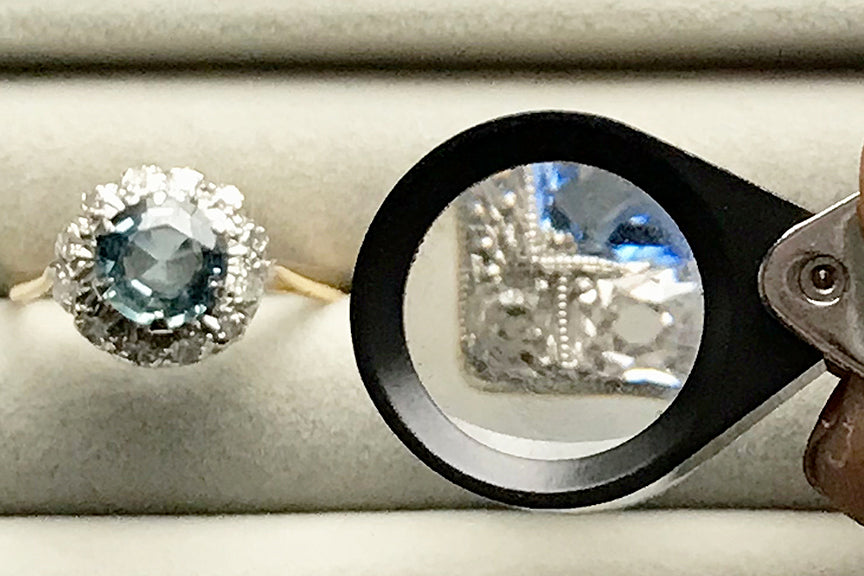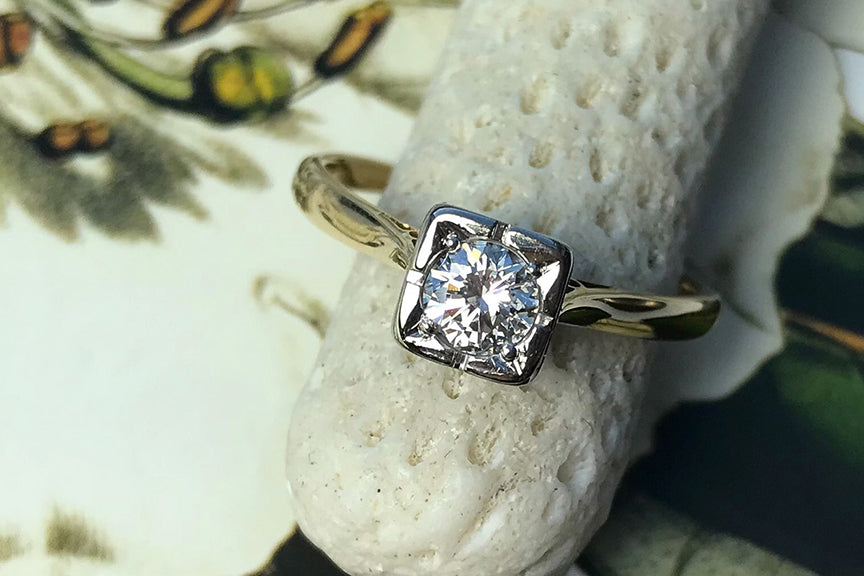
How to Authenticate a Genuine Antique: A Beginner's Guide
First, the bad news: there is no single characteristic that all antique rings share.
There are, however, some signatures that can help you authenticate your ring as a genuine vintage or antique. From taking a closer look at the cut of the diamonds to signature design details that are indicative of a certain period of time, our beginner's guide to how to tell if a ring is an antique is designed to help you shop with confidence.
Method of craftsmanship

Prior to 1890, the vast majority of rings were entirely made by hand, but from the late Victorian era onwards there was a major shift to the lost wax casting process, which enabled jewellers to reproduce designs much more easily. If a ring has been handmade, this is a good indication that it was made in the 19th century or earlier.
Diamonds

The opening of the South African diamond mines in 1870 caused a diamond rush that changed the look of engagement rings forever. Diamonds, and in particular larger solitaire stones, became much more widely available for use in jewellery in the latter part of the Victorian era, marking the start of the trend for diamond engagement rings. Around this time, the method of cutting and polishing diamonds also evolved with the development of specialised equipment in the late 1800s designed to shape diamonds much more efficiently than manpower alone. Using machinery rather than cutting the stones by hand resulted in more precise and symmetrical diamond cuts, leading to the invention of the round brilliant cut in the early 1900s. If a ring is set with an old (hand) cut diamond, this is a strong indicator that it could be an antique.
Decorative elements

Certain decorative elements are closely associated with different eras of jewellery design. Engraved shoulders, for example – the part of a ring between the setting and band – are a signature of the Victorian age, while milgrain detailing – the tiny beads of metal used to create scalloped borders around diamonds and gemstones – is indicative of the Edwardian and Art Deco eras. To find out more, see our guide to vintage engagement rings through the eras.
Hallmarks

Used for centuries as a way of verifying the authenticity of a jewel, if your ring is hallmarked on the inside band, lucky you - you will be able to tell precisely when and where it was made. However, hallmarking precious metals only became compulsory around the 1920s in the UK and hallmarks are also prone to wearing off over time. If your ring, like many, is missing a hallmark, search for another way to authenticate it instead.
How to ensure the authenticity of your antique ring

Even if an antique ring is not hallmarked, an expert who specialises in antique jewellery will be able to determine the approximate era it was made in based on the materials used, the craftsmanship and the style. To ensure you are investing in the real thing, always buy from a reputable store or dealer.
At The Vintage Ring Company, all of our antique rings are sold with a Certificate of Authenticity, signed and stamped by a third-party representative of The Goldsmiths' Company, as a guarantee that what you are buying is genuine and as described.


